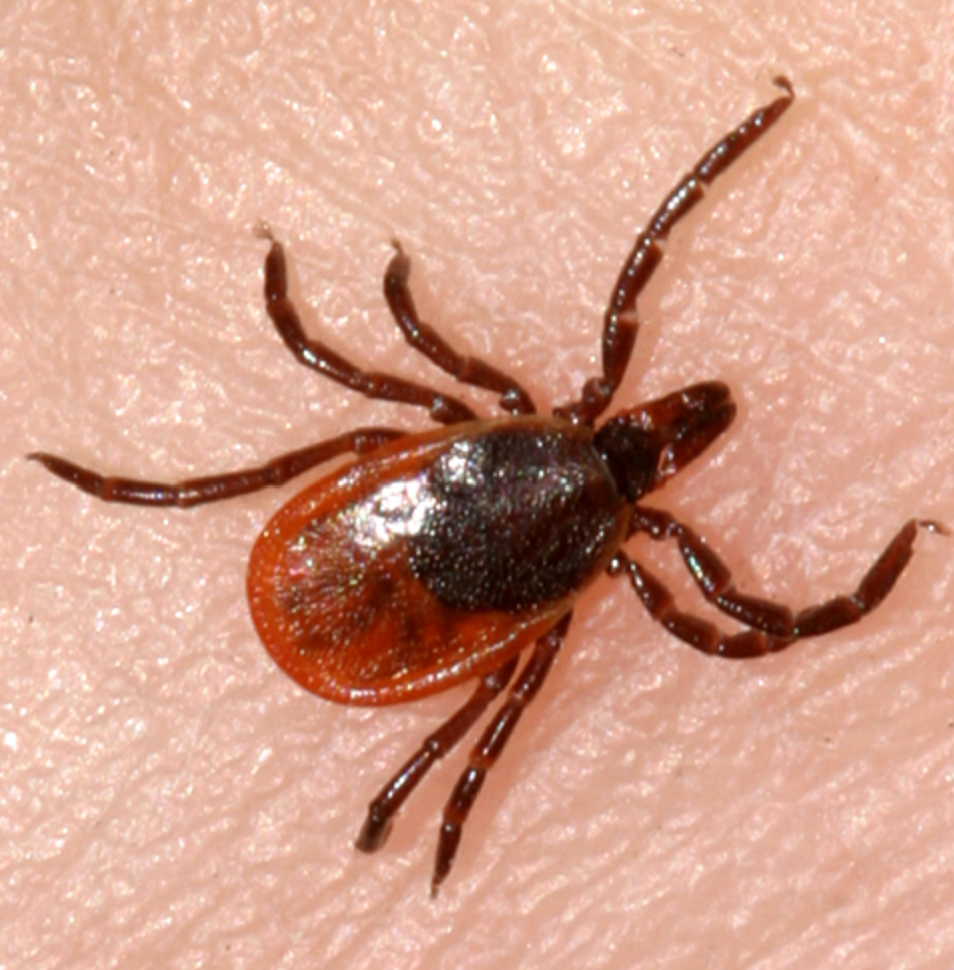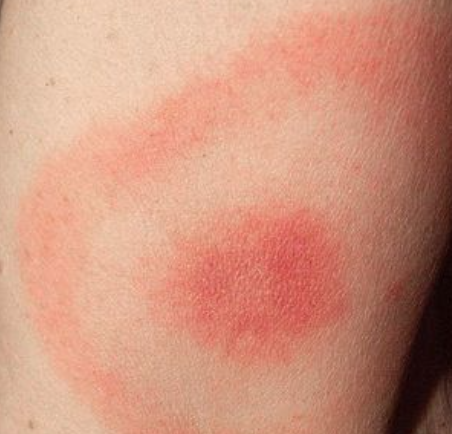
When an infected tick feeds from a human it can pass borrelia burgdorferi bacteria into the bloodstream. From there the bacterium is usually attacked by both the innate and adaptive immune systems. The innate immune system uses toll-like receptors on macrophages to bind to bacterial proteins. The adaptive immune response uses antibodies to bind to bacterial surface proteins, which results in complement activation and bacterial death.
Unfortunately, the immune response is often not enough to entirely eliminate this bacteria. This is because borrelia burgdorferi has the ability to evade the immune system by changing proteins on its cell surface.
Signs and Symptoms

If left untreated the disease can progress to stage two. During this stage neurological, joint, and cardiac symptoms can occur. The bacterium can cause cardiac arrhythmias, especially heart block. Facial drooping can be caused by damage to the facial nerve (cranial nerve seven). Meningitis, which ranges in severity, can occur. Finally, a migrating intermittent arthritis can also be seen during this stage of the disease.
If the disease continues to remain untreated, stage three ensues! This stage happens approximately a year or more after the initial tick bite. It is characterized by chronic arthritis, which can cause severe joint damage. Encephalitis (inflammation of the brain tissue) and myelitis (inflammation of the spinal cord) can also occur.
Diagnosis
The diagnosis of Lyme disease is a two step process. A blood sample is taken from the patient and a test known as an ELISA is performed. ELISA stands for “enzyme linked immunosorbent assay”. This test detects antibodies made by the patient against borrelia burgdorferi antigens (ie: it’s surface proteins). If the ELISA is positive, then a second confirmatory test called a "western blot" is performed. This test further separates the different antibodies to borrelia. If both the ELISA and western blot are "positive" the likelihood of Lyme disease is high.
Treatment
Treatment for early stage disease is with an antibiotic known as doxycycline. Children and pregnant women are often treated with amoxicillin. Other medications used include cefuroxime; erythromycin is sometimes used in patients who are allergic to pencillin. Later stages of the disease may need intravenous antibiotics.
If patients do not respond to initial antibiotic treatment it is important to think of co-existent infections with other tick-borne illnesses. Ticks may carry not only borrelia burgdorferi, but also other pathologic entities so treatment may need to be further tailored.
Overview
Lyme disease is caused by the bacterium borrelia burgdorferi. It is transmitted by the Ixodes tick and is common in the northeastern United States. Symptoms include a bull’s eye rash known as erythema migrans. Neurological, joint, and cardiac symptoms can also occur. Treatment for early stage disease is with oral antibiotics, usually doxycycline, although amoxicillin is sometimes used. Intravenous antibiotics may be necessary for later stages.
References and Resources
- Kumar V, Abbas AK, Fausto N. Robbins and Cotran Pathologic Basis of Disease
. Seventh Edition. Philadelphia: Elsevier Saunders, 2004.
- Wormser GP, Dattwyler RJ, Shapiro ED, et al. The clinical assessment, treatment, and prevention of Lyme disease, human granulocytic anaplasmosis, and babesiosis: clinical practice guidelines by the infectious disease society of America. Clin Infect Dis. 2006;43(9):1089-1134.
- Wormser GP. Clinical practice. Early Lyme disease. N Engl J Med. 2006 Jun 29;354(26):2794-801.